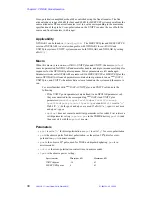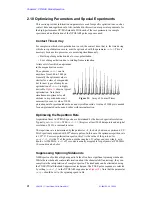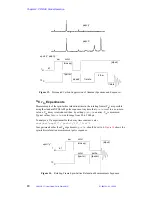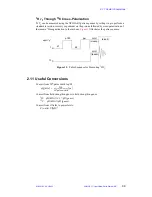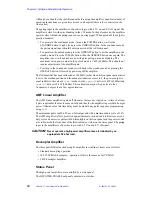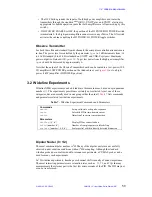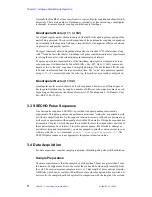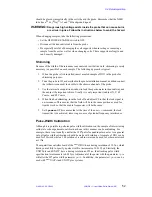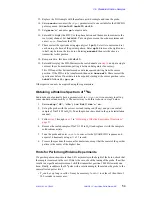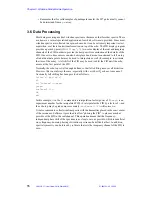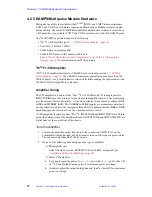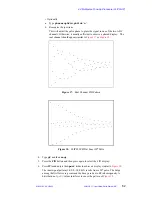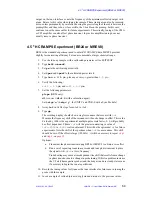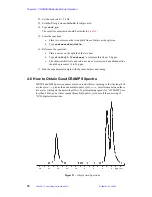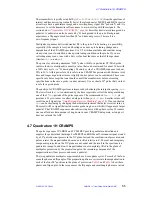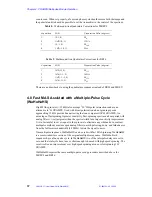
3.4 Data Acquisition
01-999162-00 C0402
VNMR 6.1C User Guide: Solid-State NMR
52
should be placed symmetrically in the coil when in the probe. Remember that the NMR
tube has a
29
Si, (
l3
Na)
27
Al and
11
B background signal.
WARNING:
Dangerous high voltage exists inside the probe that can cause burns
or serious injuries. Follow the instructions below to avoid the hazard.
When changing samples, take the following precautions:
• Set the HI POWER ENABLE switch to OFF.
• Disconnect the transmitter cable from the probe.
• Be especially careful of damaging the coil supports when inserting or removing a
sample from the coil as well as when changing coils. These supports are fragile and
can be easily damaged.
Shimming
Because of the width of the resonances encountered in wideline work, shimming is rarely
necessary (or possible!) on each sample. The following approach is typical:
1.
When the probe is first installed, insert a sealed sample of D
2
O in the probe for
shimming purposes.
2.
Tune the probe to
2
H, as described in the probe installation manual, and then connect
the (otherwise unused) lock cable to the observe channel of the probe.
3.
Use the interactive acquisition window to lock the spectrometer in the usual way, and
then adjust the important shims. Usually it is only important to adjust X, Y, Z1
Coarse, and Z2 Coarse.
4.
When finished shimming, turn the lock off and adjust Z0 so that the lock signal is
on-resonance. This ensures that the field will be in the same position as used for
liquids work, so that the usable frequencies will be the same.
5.
Set
lpower=0
. This ensures that at the time of the next
su
command, the lock
transmitter is deactivated, removing a source of potential frequency interference.
Pulse-Width Calibration
Although it is possible to perform pulse width calibrations on the sample of interest using
solid-state echo experiments, calibrations done in this manner can be misleading. For
example, there is not usually a null at the 180
°
pulse for quadrupolar nuclei. As a general
rule, all pulse width calibrations should be made with solutions. A sample of D
2
O can be
used for
2
H work, while a 1 M solution of a salt in water can be used for other nuclei such
as
23
Na.
The acquisition controller board of the
UNITY
INOVA has a timing resolution of 12.5 ns, which
limits your ability to specify a pulse width to increments of 0.0125
µ
s. Similarly, the
UNITYplus and UNITY have a timing resolution of 25 ns, thus limiting pulse width
specification to increments to 0.025
µ
s. Adjustment of the power with the parameter
tpwr
will alter the 90
°
pulse width parameter
pw90
. In addition, the parameter
tpwrm
can be
used with
UNITY
INOVA and UNITYplus systems.


